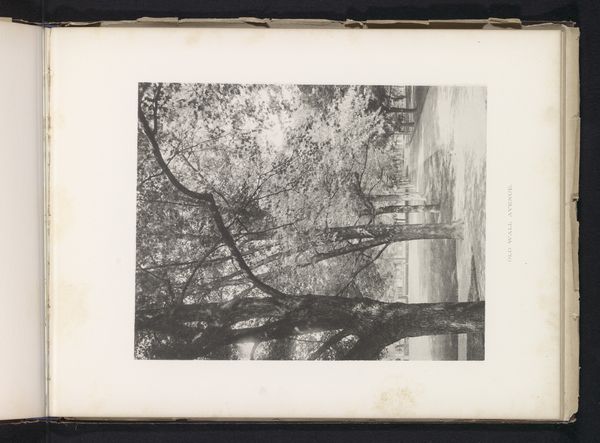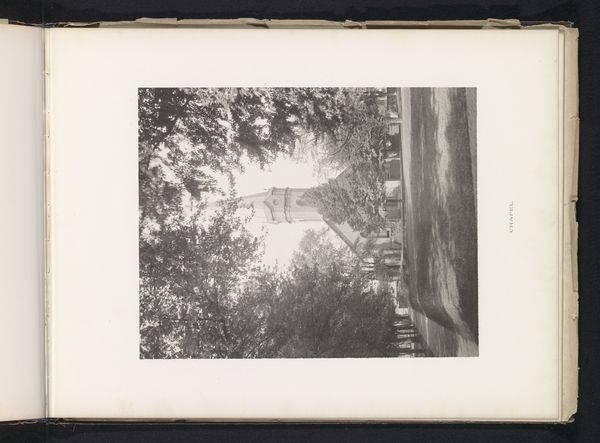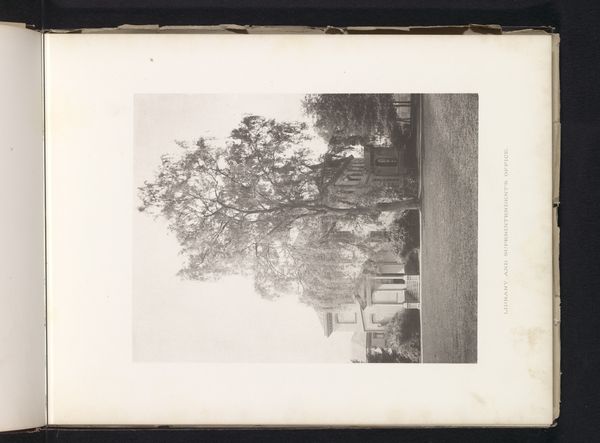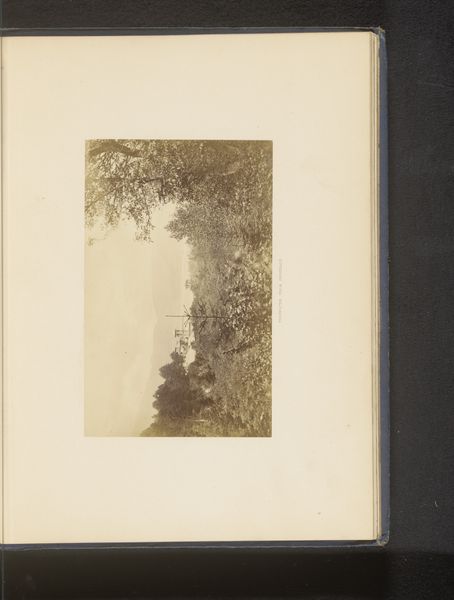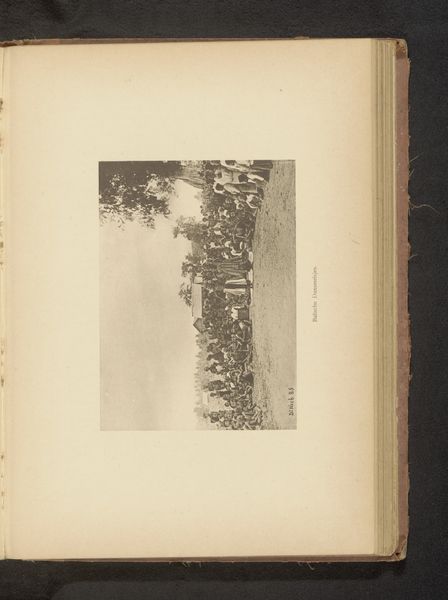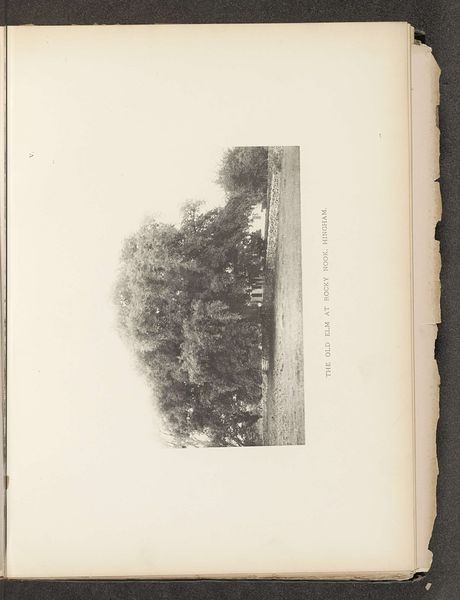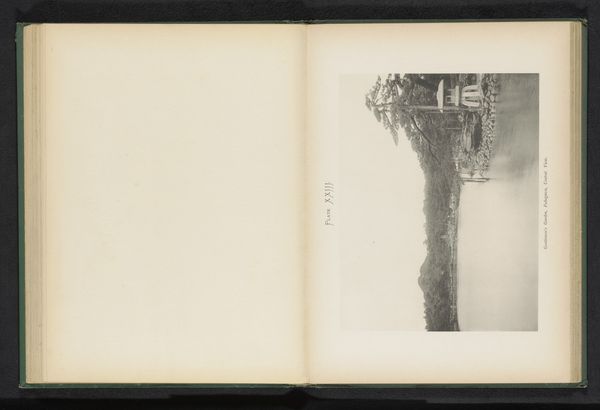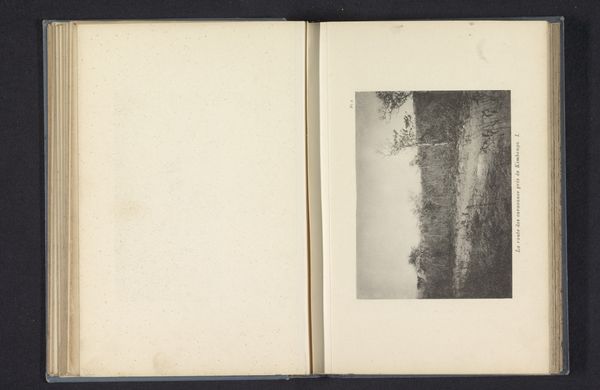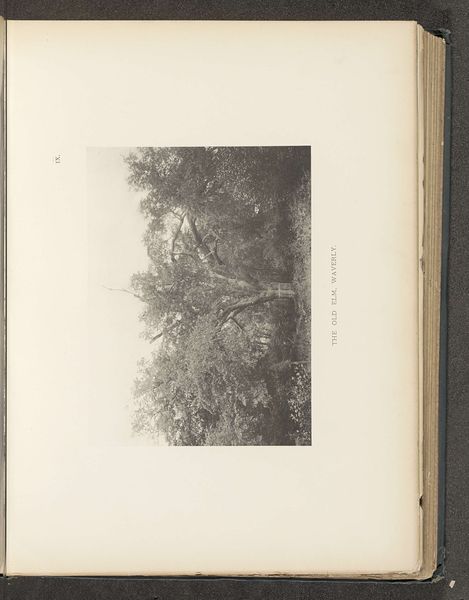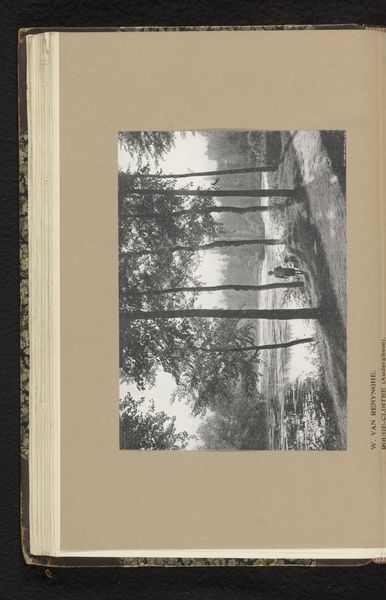
#
photo of handprinted image
#
aged paper
#
toned paper
#
pale palette
#
ink paper printed
#
white palette
#
carved into stone
#
carved
#
watercolour bleed
#
watercolor
Dimensions: height 236 mm, width 186 mm
Copyright: Rijks Museum: Open Domain
Curator: This is a photographic print titled "Love Lane," dating from before 1890 by Edward H. Hart. It appears to be made using ink on paper. Editor: Immediately, the image strikes me as quiet, melancholic, despite its apparent simplicity. The light feels diffuse, and the monochrome tones give it a sense of distance, of time passing. It speaks to me about materiality and process. The handprinting has a kind of unique expressiveness. Curator: Yes, there's an inherent poignancy. "Love Lane," as a name, already carries cultural baggage – ideas of romance, secrecy, and perhaps a hint of transgression. Visually, the avenue of trees suggests both shelter and enclosure, evoking a duality that reflects the complexities of love itself. The trees offer a memory of connection to the past. Editor: It's interesting that you frame it within love. It's more of a record for me, about how landscapes, particularly working-class environments, have always been defined through labor. How someone chooses the particular tonality, to depict landscape; and the way a physical object made of ink on paper degrades overtime adds an important dimension of interpretation. It evokes ideas of preservation and how we value what lasts, what's durable versus what's ephemeral. Curator: I can see how it can bring ideas about labor to the surface. However, beyond that physical trace, it speaks to something more intangible: a longing, a memory of shared experience now faded like the photograph itself. Editor: I think there's something particularly powerful about how Hart handled his materials. The paper itself, the inks, all these components were products shaped by an industrial system—a system very different to our own today. But in looking at "Love Lane" there's also something deeply intimate in this creation, something connecting past social activities to present understanding. Curator: Ultimately, the power of the artwork, whatever symbolic layers we may attribute, rests in the affective resonance it triggers in each of us—it makes us pause and reflect on the fleeting, intimate moments in our lives. Editor: And consider how these "fleeting, intimate moments" are captured, consumed, and ultimately transformed as material objects in this world. Both meanings have some value and resonance today.
Comments
No comments
Be the first to comment and join the conversation on the ultimate creative platform.
